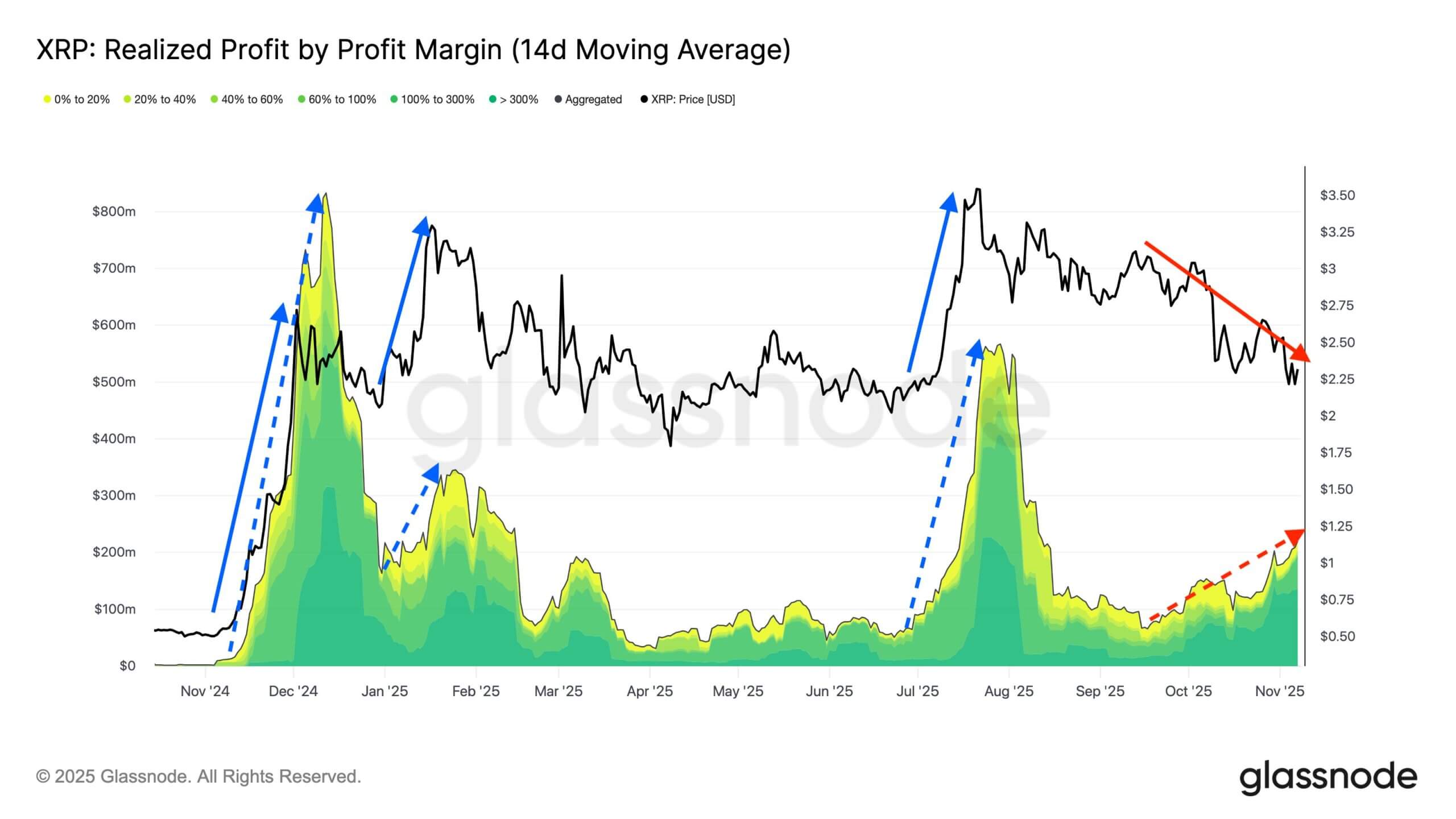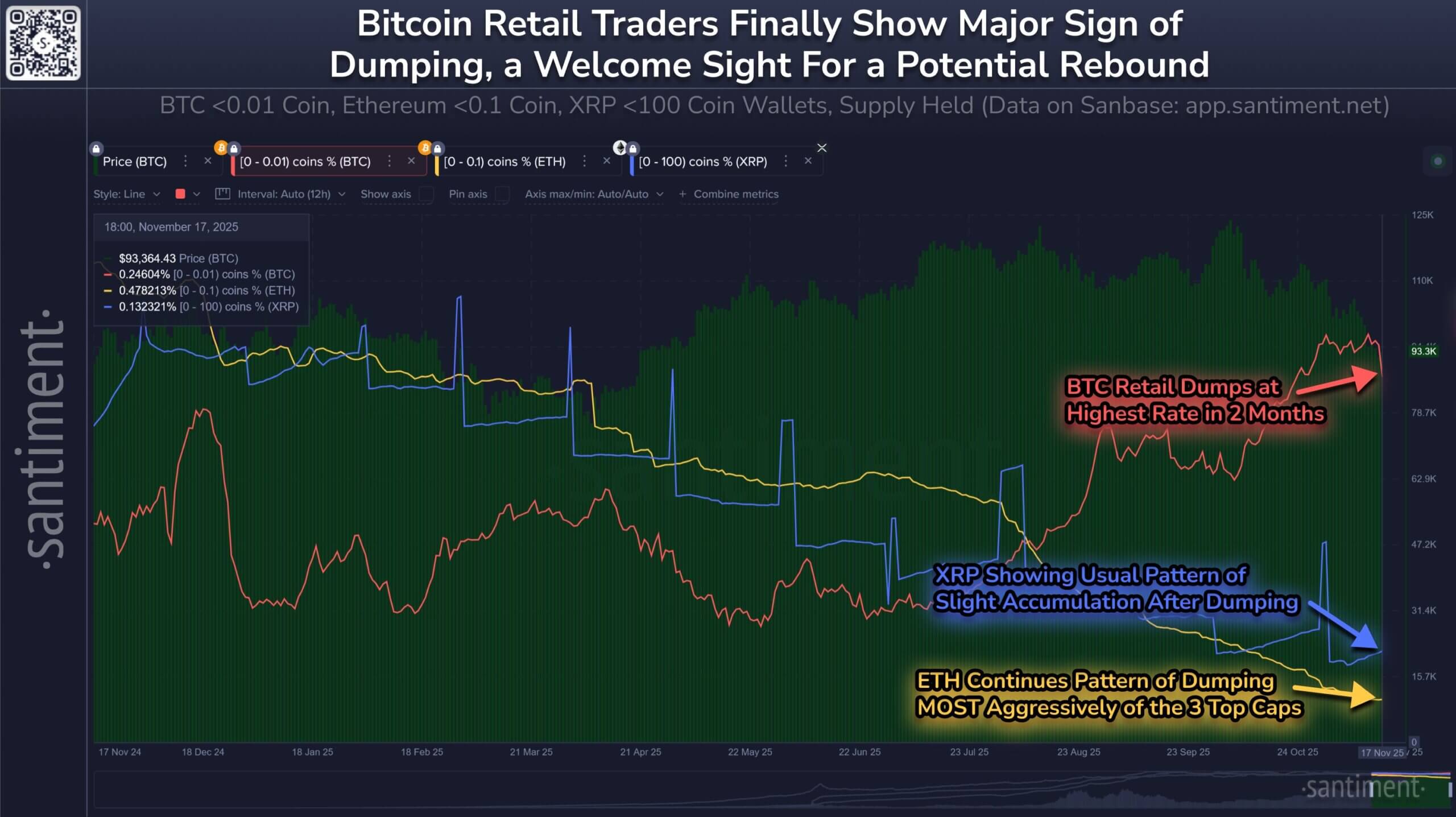XRP’s profitability metrics have declined, with only 58.5% of the circulating supply currently in profit. Derivatives activity shows cautious sentiment as XRP futures open interest has significantly decreased.
What to Know:
- XRP’s profitability metrics have declined, with only 58.5% of the circulating supply currently in profit.
- Derivatives activity shows cautious sentiment as XRP futures open interest has significantly decreased.
- Despite short-term weakness, strong fundamentals like Ripple’s settlement with the SEC and the launch of XRP ETFs support the asset’s long-term potential.
XRP is facing renewed pressure as market conditions impact its profitability, bringing it back to levels seen in late 2024. Data indicates that a smaller percentage of XRP’s circulating supply is in profit, reflecting challenges for recent buyers. However, underlying factors suggest potential for future growth and stability in the XRP ecosystem.
The drop in XRP futures open interest signals weakening speculative demand and traders reducing directional bets. This trend explains the stall in XRP’s price growth after its post-election spike, as it has largely traded sideways around $2.10. Profit-taking from long-term holders who accumulated XRP at lower prices has further contributed to the current price struggles.



Despite the current weakness, Ripple’s settlement with the SEC and strategic company moves provide a solid base. Ripple’s $500 million capital raise, acquisitions, and partnerships are fortifying its product suite and expanding its global footprint. Analysts view these developments as beneficial for XRP’s long-term positioning, as they enhance the ecosystem that supports the token.
The launch of several spot XRP ETFs is boosting institutional interest in the digital asset. Firms like Franklin Templeton and Bitwise have introduced XRP ETFs, with Canary Capital’s XRPC ETF attracting significant early inflows. Social platforms continue to actively discuss XRP, focusing on ETF launches, market volatility, and its standing among other major cryptocurrencies like Bitcoin and Ethereum.


While XRP faces short-term challenges, its strong fundamentals and increasing institutional interest suggest potential for future recovery. Investors should monitor market trends and regulatory developments to make informed decisions.
Related: XRP Price: $12M Max Pain for Bears
Source: Original article
Quick Summary
XRP’s profitability metrics have declined, with only 58.5% of the circulating supply currently in profit. Derivatives activity shows cautious sentiment as XRP futures open interest has significantly decreased. Despite short-term weakness, strong fundamentals like Ripple’s settlement with the SEC and the launch of XRP ETFs support the asset’s long-term potential.
Source
Information sourced from official Ripple publications, institutional research, regulatory documentation and reputable crypto news outlets.
Author
Ripple Van Winkle is a cryptocurrency analyst and founder of XRP Right Now. He has been active in the crypto space for over 8 years and has generated more than 25 million views across YouTube covering XRP daily.
Editorial Note
Opinions are the author's alone and for informational purposes only. This publication does not provide investment advice.


